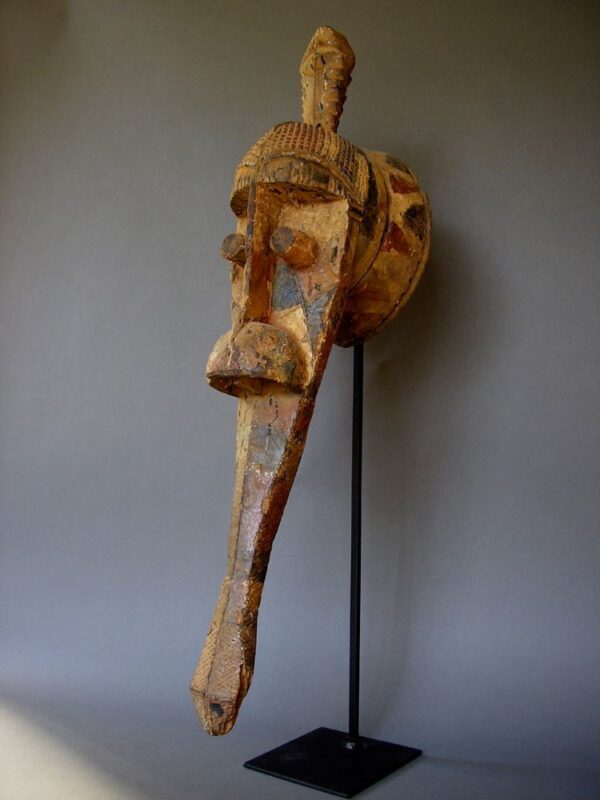Object Title: Ijo Canoe Mask
Materials: Wood, pigment
Country: Nigeria
Culture: Ijo People
Date Created: 1st Half of 20th Century


Object Title: Ijo Canoe Mask
Materials: Wood, pigment
Country: Nigeria
Culture: Ijo People
Date Created: 1st Half of 20th Century
The Ijo people inhabit an area in the region of the Bight of Biafra in Nigeria in several of the coastal states. Historically, the Ijo were part of the early European trade and acted as a means of coastal access to inland resources, mostly from the Igbo living to the North of them.
The Ijo are a confederacy of roughly 50 clans that speak at least two distinct languages and though culturally related, they fall into three major categories as far as Art and Ethnography: the Kalabari Ijo of River State, the Coastal central Ijo, and the “Western Ijo” (actually a group of some 18 clans) of Delta State. This mask was made by the Western Ijo.
The art of the Western Ijo is characterized by a strong geometric and cubistic formalism that finds expression in jutting tubular eyes, and mouths carved perpendicular to the surface planes of the primary face. Often these forms are depicted as overlays of incredible animals or sea creatures. Masks of this type were made to represent nature spirits, both of the water and the land and were worn horizontally at large mask displays on festival days. Shrines were erected in similar style to areas where spirits were believed to dwell and offerings made in these locations.
As a result of both the culturally diffuse style and the festival-like nature of the masquerades, Western Ijo art lasted in a traditional context. At present however, the style has degenerated into a general masquerade of enormous and rather poorly carved masks that bear little resemblance to the older masks, such as the Ross example.
Exhibition History:
In Memoriam – Bonnie Terrill Ross (1956-2022). New York: QCC Art Gallery of CUNY, October 12, 2023, to February 16, 2024.